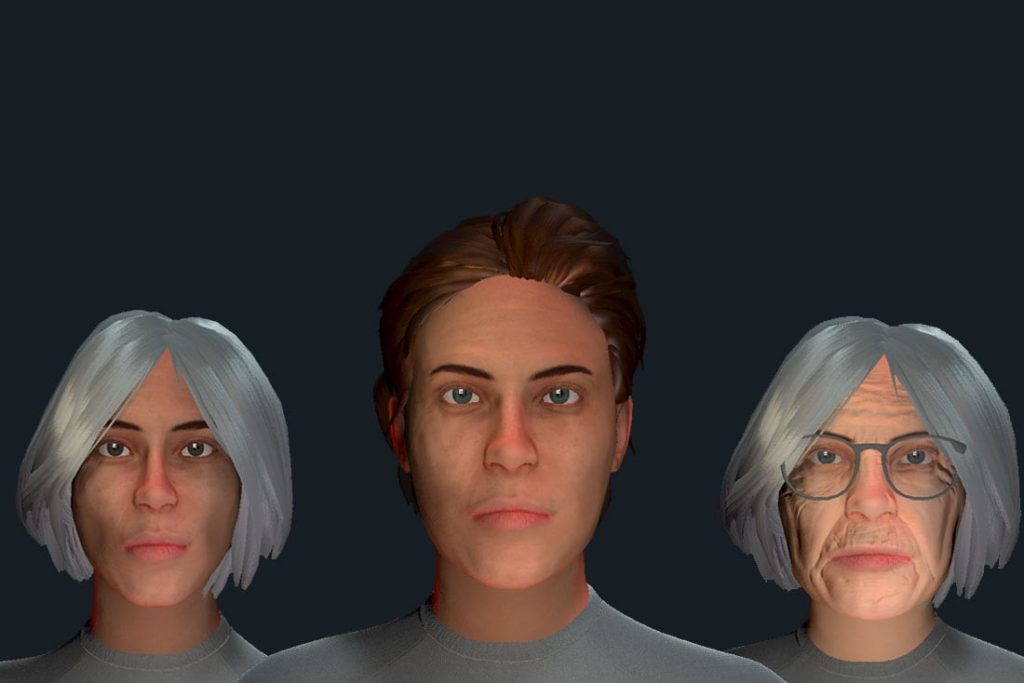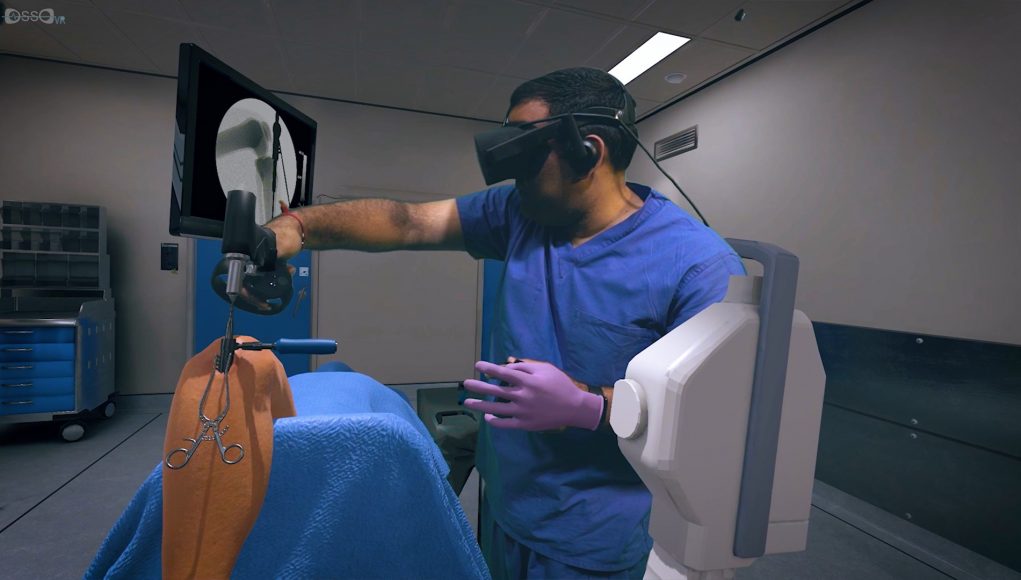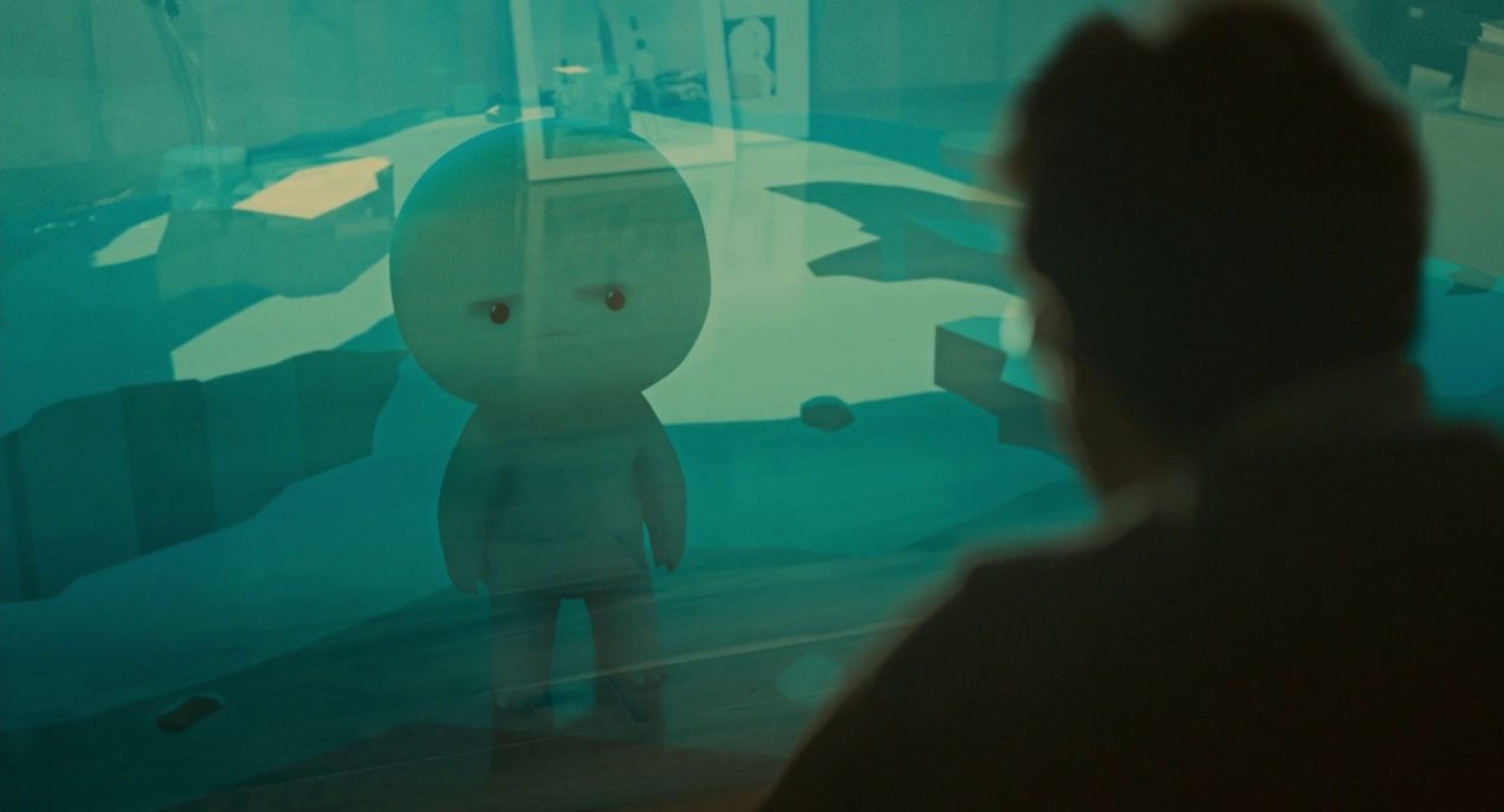Located in the creative Meat Packing District in Copenhagen, Khora is a VR and AR production studio on a mission to explore the potential and purpose of Virtual and Augmented Reality, creating cutting edge content to apply in multiple sectors. From healthcare, to marketing, art, tourism, education, and training, Khora bridges the gap between the physical and virtual worlds.

Together with Simon Lajboschitz, co-founder & CEO of Khora, we touched several aspects of the future of VR experiences and how they will impact and transform our lives in a not-so-distant future. Simon’s background in Philosophy and Business Entrepreneurship and his passion for new technologies give him a holistic view on questions about Virtual Reality.
Khora is working on “The Challenge Project” which aims at helping people with schizophrenia fight auditory hallucinations by using Virtual Reality simulation training. How important is it for VR to have realistic visuals? Is it a case that the more realistic the visuals are, the more effective the therapy is?
There’s a lot of science in that area. Of course, the more realistic a creation, the easier it is for people to empathise with it. But it’s also quite easy to empathise with cartoon-looking people, think about the characters in Up by Pixar, for example; Pixar characters are pretty easy to relate to, despite the fact that they don’t look human at all. There is a concept, called Uncanny Valley, which suggests we experience a dip in emotional response when we encounter an avatar that is almost, but not quite, human. This is why we feel a sense of unease, discomfort, and strange familiarity when we look at a near-humans, such as certain robots. If human-likeness decreases or increases beyond this point, and the avatars become far from or close to human, the emotional response returns to being positive. That’s why you don’t want to be in this middle point.
In this particular project, we’re working with a very diverse target group. Some people see faces, some people don’t and only hear voices. Many people don’t associate defined features with the people they see in their mind. When you try to recall something or someone from memory, the image you have in your mind is always more vague than a photo. The avatar serves to slowly replace the vague image these people have in their mind. So, using avatars helps them fixate an undefined image onto something.

In a video (above) about this project, your colleague Nicole says that “VR has been proven to be as or even more effective than real life exposure”. How can VR become more effective?
Schizophrenia is a mental disorder that is really difficult to treat. Medication is one of the major types of treatment, which has significant side effects, and it doesn’t work to take it for everyone. VR gets “under people’s skin.” It’s a more powerful tool compared to regular conversations, as regular therapy. Perhaps in the future a mix of regular therapy, VR therapy, and some medication will be used. This also means we have to be really careful. That’s why we work with leading experts and do clinical trials.
Across the world, there aren’t many people working with avatar therapy. In the UK, some positive results have come from research where patients video call with an avatar who looks like them. It’s not VR though. But apart from this, there hasn’t been much research. I hope we’ll get to make a more updated type of avatar therapy that also has the applications of VR.

Khora has also worked on many other projects that don’t require avatars, like the VR Flight Exposure to help people who are afraid of flying. When you have the headset on, you are so immersed in the environment, that sometimes you almost want to touch the things you see. So far, VR is very focused on vision and sound. Is there anyone in this industry who is trying to merge VR with other sensory experiences?
I think that the visual and sound aspects are equally important. But there’s another sense you don’t really account for; that is the perception of your own body and hand movements, which really makes VR so different than watching a film. In VR, your body is in the experience.
There are people trying to include haptics in VR. For example, when you touch a virtual object, a vibration is sent to your fingers or your fingers are pushed back, giving you a sense of grip. Haptics make a lot of sense for certain things, and in the future they will become part of the VR experience. However, I think they are a bit overrated and sometimes unnecessary. I think haptics will be incorporated into VR only in those industries that really require it. Of course, if it’s about training surgeons, who need to exercise their fine finger tactility, haptics would add a whole new dimension to VR training. But for things that don’t entail complexity, haptics aren’t that necessary. We did an electrician simulation where part of the task was to unscrew things, and the screw would unscrew by itself. Using a screwdriver, for an electrician, is a basic action, so, haptics, in this case, don’t matter too much.

Lately, there has also been a rise in self-help practices through books, meditation apps, podcasts, videos etc. There seem to be a tendency of people wanting to do things on their own. What challenges are there for a product like this to become more mainstream? Do you think people might start using VR for self-therapy?
Yeah, definitely. Although, if we speak of disorders like schizophrenia, we have to be careful about who we send home with a VR therapy experience. But if we consider, for instance, people who are afraid of flying, we know that they encounter huge difficulties when travelling, but not with other tasks in their daily life. For issues like this, it’s easy to practice. In the VR Flight Exposure project we did for Ørsted, the idea was to help their staff practice and diminish their anxiety related to flying, on their own, without a psychologist. This is an example of what people could do in their homes.
Exposure through VR allows frequent repetition in a small time frame. In real life, it wouldn’t be possible to take 20 flights in one day!
Yeah, the more difficult it is to try something in real life, the more relevant VR becomes. We are currently doing the world’s biggest trial for social anxiety with Capital Region Mental Health Services. We are working on a project for kids who are afraid of going to school, and one for people who have elevator anxiety. We also have a film library of anxiety applications, called Khora Exposure, with about 50 scenario videos and about 15 anxiety areas.
All these experiences are designed to help someone overcome a fear or trauma. However, there are experiences, such as VR horror games, that could, instead, cause or trigger latent trauma. Do you think companies should be weary of this? From an ethical point of view, what are the limitations of what VR can be used for?
This is why there are children ratings on computer games and movies. VR is quite similar to horror movies or games in this respect. Things need to be marked correctly, and people need to be given the choice whether they consume something or not, while making sure that kids aren’t forced to do something that they’re not old enough to cope with.
I think the ethical dilemma is the same as with other content. Think of games with realistic murders or violence, like Rape Day — a controversial non-VR game that allows players to kill and rape women — which was removed from Steam after thousands of people signed online petitions. This would be even crazier in VR, if 13 year-old kids who are in full immersion were playing some game like this. How much should the government or platforms control content? I wish we could get to a place where the government educated kids and adults enough to help them choose themselves. Anyway, I think the rules we have mean that one cannot suggest violence.

I’m trying not to cast too much ethical judgment on new technology. I think people have a tendency to be a little resistant. Because it’s new, it becomes scary, and because it’s scary, it becomes ethically problematic, and then people, through their emotions, cast these different kinds of judgments of ethics on new technology. I don’t think that technology is inherently good or bad. These broad, new technologies don’t have too much intention, except for fulfilling needs that people have — like better gaming, better porn, better mental health, better pain management, better training, etc.
There was an experiment in a South Korean documentary where a mother got to see her dead daughter, who died aged seven in 2017, through VR. If this doesn’t remain an isolated case, we might start to see people’s effigies be used for avatars or VR experiences from lived memories. But who has the right to whose memories? We might end up in a future scenario where loved ones need to give permission to reanimate them in the event of their death. We’ve seen how big tech has acquired our data, images, search history, and geolocation to sell it and commoditize it without the public’s awareness or consent. Will we end up having to impose a veto on memories to prevent them from becoming our VR legacy?
I think it could be quite soon that Facebook lets you choose whether you want your profile to be deleted in case you die. When I saw the video of this South Korean experiment, it felt really weird. My second thought was, “will it be harmful for the mother to have access to these fake daughter experiences?” Honestly, I don’t know.
We see photos and videos all the time. We’re happy to revisit memories or show our son a grandmother he has never met. When photography was invented 200 years ago, maybe the same questions arose then. There’s always something absurd and bizarre somewhere, to me. I’m thinking of these ‘digital friends and girlfriends’ in Japan. Or coach friends you can get, like Siri.
Like the one in the movie Her, do you know it?
Yes I love Her! I use that reference in my presentations all the time.

So, how will our virtual realities evolve in the future? Will they merge with our true reality?
Digital life has taken off so fast that people have a presumptuous, negative approach to it. Mothers will say, “I’m so proud of my son, he reads books all the time” or, “my son plays computer games all the time, it’s so bad.” But is reading all the time better than playing computer games? Surely it depends on the book and the computer game. I think we need to get used to the digital life we have. We will start accepting that the digital world is part of us, instead of seeing the Internet and everything digital as something fake or a distraction — people say, “I spent ages on Facebook, which doesn’t really exist, therefore I wasted my time”. In the future we will start to understand that things happening online also happen in real life. Think of online bullying in the 90’s, it wasn’t considered real bullying then, but simply something written on the Internet. Now we’ve accepted that digital bullying is just the same as real bullying.
I think more and more digital and real things will start to merge. It will bbe normal for people to buy digital artworks, just like they buy physical products. People will be caring about their digital outfits and their digital avatar just like they care about their body and their clothing in real life. We will see more things that are between us and at the edge of our sensory realities merge — words, colours, and sensory information. It may seem scary, but we will get used to it. We will think of our digital selves as an extension of ourselves, a bit like we do with our phones — we don’t need to remember some things because the phone remembers for us. Of course, we will become more dependent on technology and of course it will give us a lot more possibilities, but this is the big transition we will see over the next five or ten years: we will accept that something can be real but not physical.
It really becomes a philosophical discussion now, where you think about your body — the physical part of you — and your soul, which is intangible. Philosophers will have a lot to think about in the future.
I think people will be more aware of how to use technology to improve their life, instead of just consuming it. Today, we don’t know when to stop, we don’t know when to say no. It’s like being addicted to painkillers. Painkillers shouldn’t go away entirely, we sometimes need them, but we shouldn’t always use them. I think we will be better at using technology, we will use it more where it actually does help us.




